Elisabeth Bik has been studying some pathological cancer papers from the University of Nebraska, and she soon figured out that the state’s slogan “Nebraska. Honestly, it’s not for everyone” applies here also. According to Bik,
“This slogan should maybe be extended to include science as well, because some labs from the University of Nebraska appear to produce more papers with duplicated images than others.”
Bik shared with me a set of 11 papers with potential image duplication concerns, from a research group spanning the Departments of Radiation Oncology, Pathology and Microbiology, the Eppley Institute for Research in Cancer and Allied Disease, all part of the University of Nebraska Medical Center. Some scientists there are apparently in the business of curing cancer with Photoshop.

The image duplication expert Bik explained the history of her Nebraska findings:
“Seven of these papers were reported to the university in February 2016. The University was quick to respond and completed their investigation within a year. Two additional papers were sent to the University in October 2017, and [recently] I found problems in two more papers, bringing the total to 11 papers with problems.
Two of the 11 papers have since then been corrected (one in 2016 and one in 2018), and a third one has recently been retracted.“
Same names keep popping up on the authors’ lists, the most recurrent one is Ying Yan, associate professor at the Department of Radiation Oncology. She is presently supervising 7 NIH R01 grants worth over $15mn as principal investigator. A recent retraction for data manipulation in SEVEN figures was certainly an embarrassing setback for Nebraska’s shooting star Yan and her Eppley Institute mentor and regular coauthor Kenneth Cowan. Honesty, it’s not for everyone.
Y Yan, JP Haas, M Kim, MK Sgagias, KH Cowan BRCA1-induced apoptosis involves inactivation of ERK1/2 activities The Journal of biological chemistry (2002) doi: 10.1074/jbc.m201147200 ; Retraction 19 May 2019

Bik reported that paper and its gel band breeding bonanza to the journal JBC in February 2016, the retraction took over 3 years, and it is obvious Yan and Cowan fought tooth and nail to prevent it. Even now they passive-aggressively insist in the retraction notice:
“However, the withdrawing authors state that these errors do not change the underlying scientific findings of the article”
Actually, Yan and Cowan are right, in a way. Their paper never contained any underlying scientific findings, but it did contain lots of lying, decorated by Photoshop artistry and fake loading controls like these:
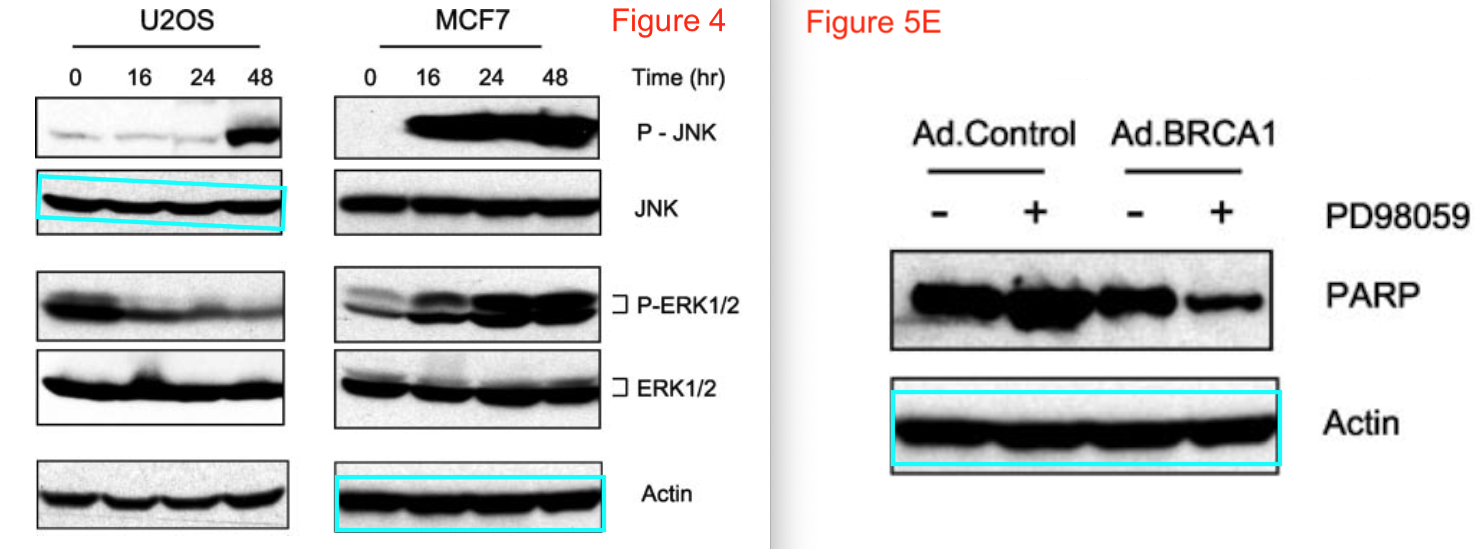
The following Yan & Cowan masterpiece was not even corrected, probably because the Editor-in-Chief of Oncogene, the Imperial College London professor Justin Stebbing, is still sulking about his own manipulated papers exposed. Which is good news for Yan, Cowan and their dishonest coauthors.
Y Yan, RS Spieker, M Kim, SM Stoeger, KH Cowan BRCA1-mediated G2/M cell cycle arrest requires ERK1/2 kinase activation Oncogene (2005) doi: 10.1038/sj.onc.1208492
It’s only loading controls, right? Would you like to see what else Yan and Cowan published in Oncogene? It is very, very bad, even for Oncogene‘s laissez-faire standards this western blot hooliganism is barely ignorable. Especially since the journal was notified right away when the paper appeared in 2015:
Y Yan, AL Hein, PM Greer, Z Wang, RH Kolb, SK Batra, KH Cowan A novel function of HER2/Neu in the activation of G2/M checkpoint in response to γ-irradiation Oncogene (2015) doi: 10.1038/onc.2014.167
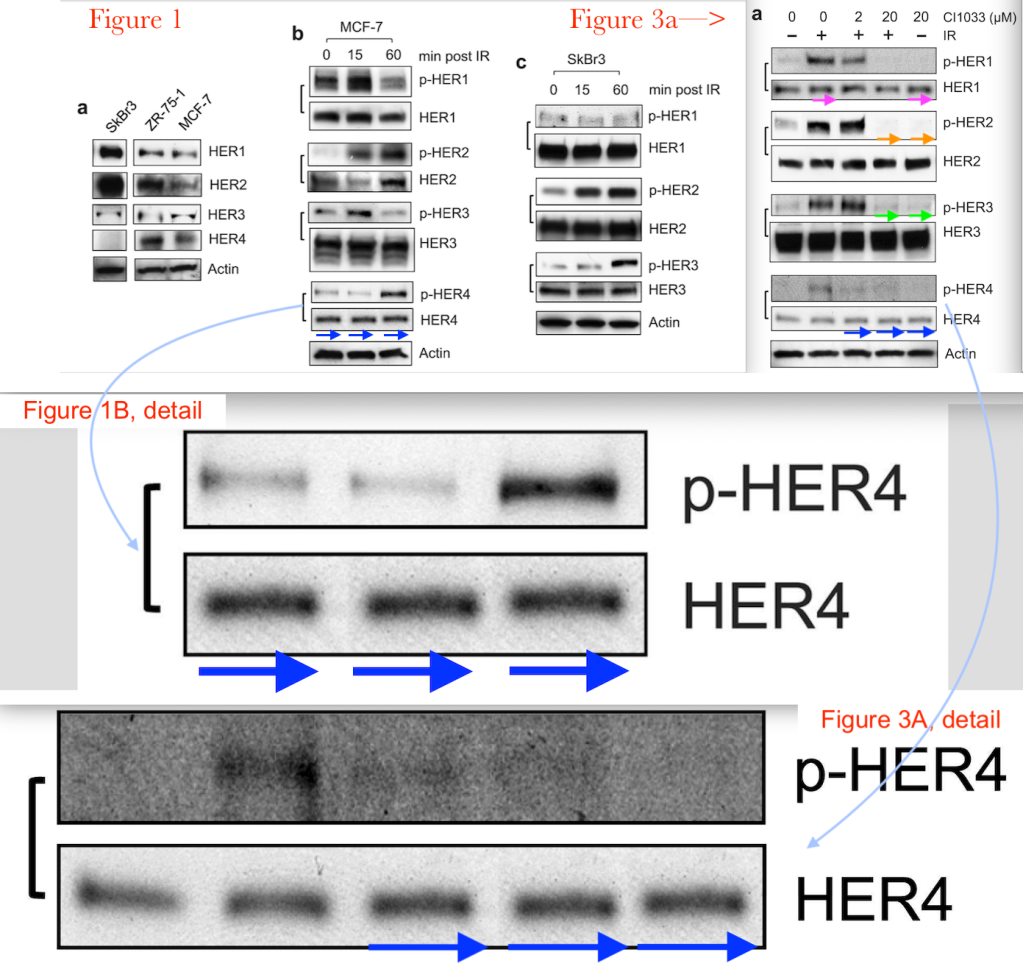
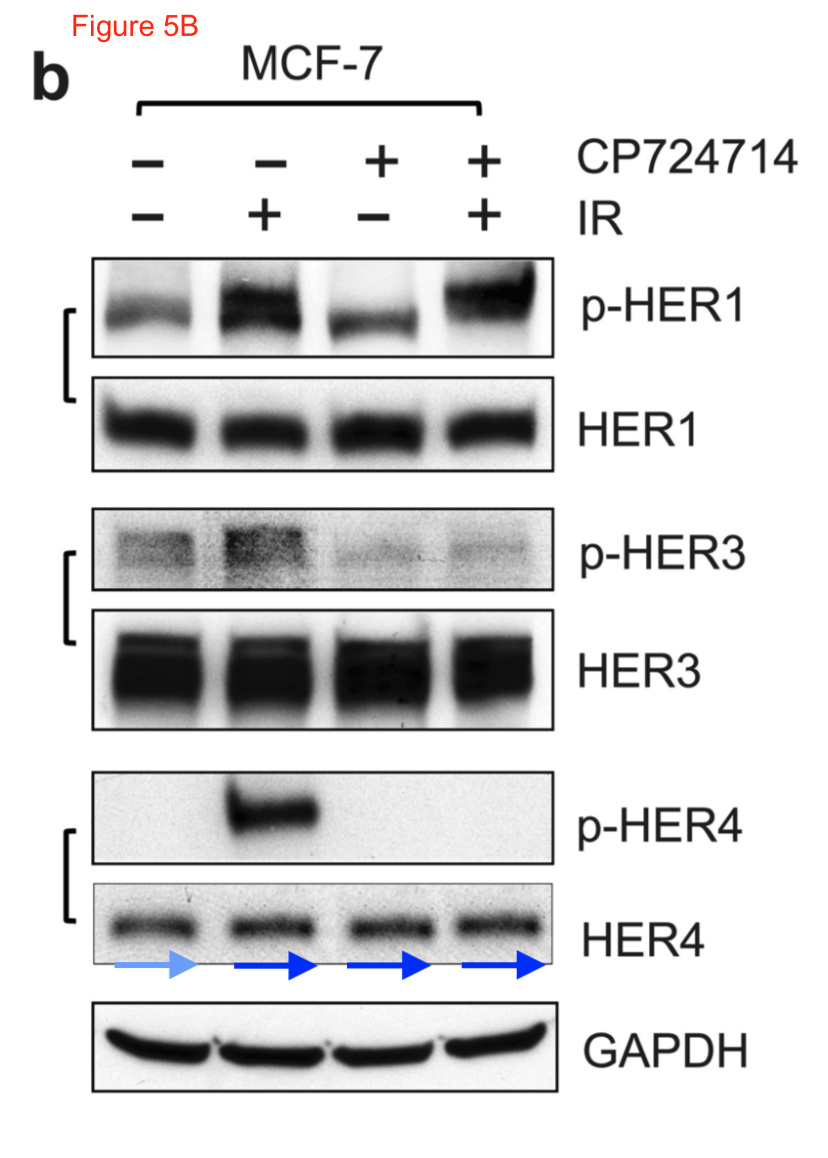
There is more, because of course there are cloned bands in Figure 4A, while the blue and pink bands from Figures 1B and 3A make a special appearance in the figure 5B! The blue band even trice, which makes a total 9 copies of that little rascal, a record for that 2015 Oncogene paper from Nebraska. If only some Oncogene editor or Springer Nature manager bothered to ask the authors for the raw data back in 2016, for any of the figures in that paper, but instead they chose to ignore Bik.
Yan’s and Cowan’s coauthors were mostly passing young clinicians, who seem not to have cared about anything but a flashy CV, but the penultimate author Surinder Batra is actually head of department at the College of Medicine of University of Nebraska, and next to Yan, a co-investigator on several million-dollar-heavy NIH R01 grants.
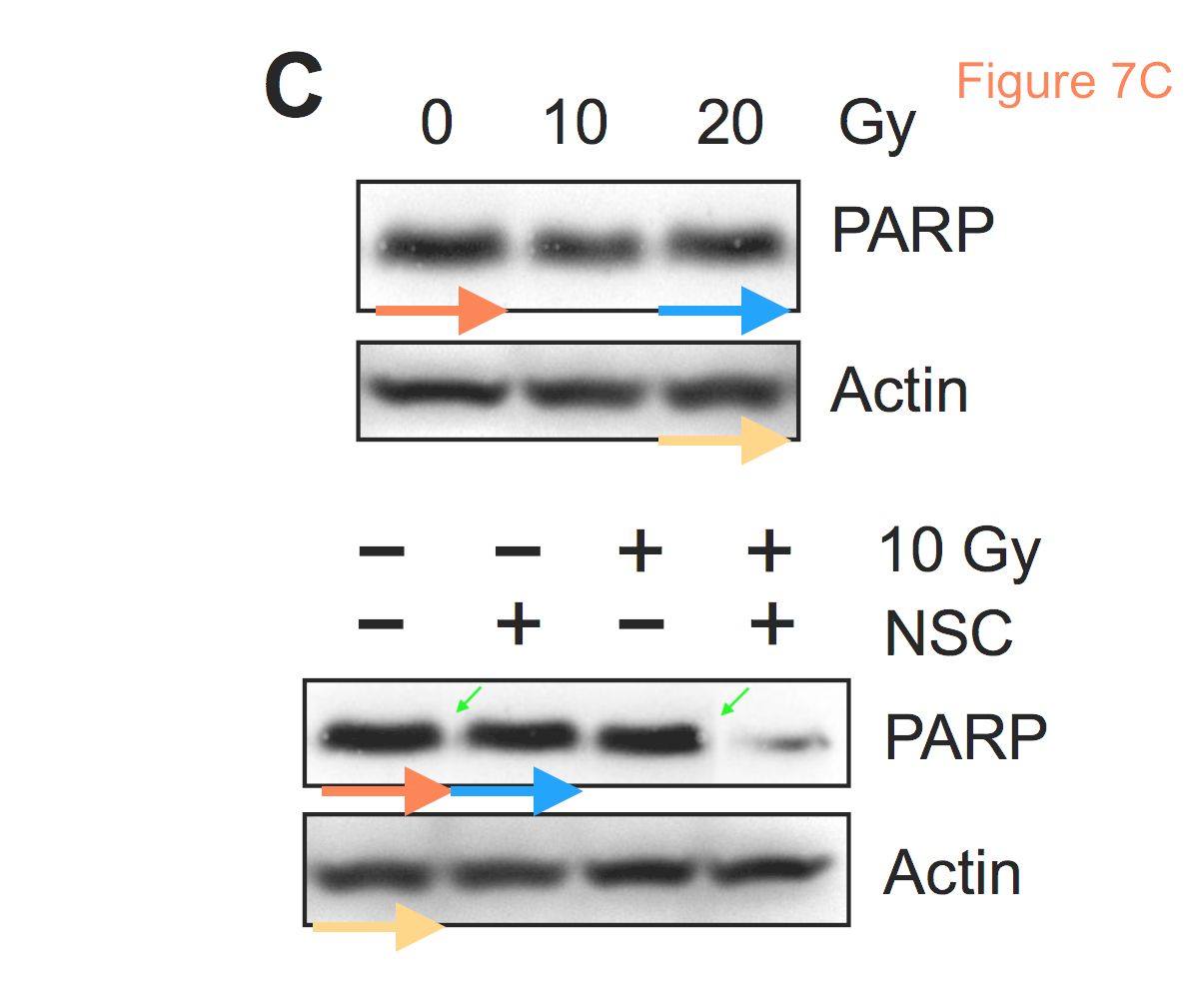
The Yan & Cowan co-production also delivered this little Photoshop orgy in Figure 7, where the authors were probably testing if anyone at BioMedCentral was paying any attention whatsoever. They were not.
Y Yan, PM Greer, PT Cao, RH Kolb, K Cowan RAC1 GTPase plays an important role in γ-irradiation induced G2/M checkpoint activation Breast cancer research : BCR (2012) doi: 10.1186/bcr3164
Cowan was apparently so happy about Yan’s performance, that for a parallel paper with same team in 2012, he even made her last author, so that Yan can qualify for a faculty position:
RH Kolb, PM Greer, PT Cao, KH Cowan, Y Yan ERK1/2 signaling plays an important role in topoisomerase II poison-induced G2/M checkpoint activation PLoS ONE (2012) doi: 10.1371/journal.pone.0050281
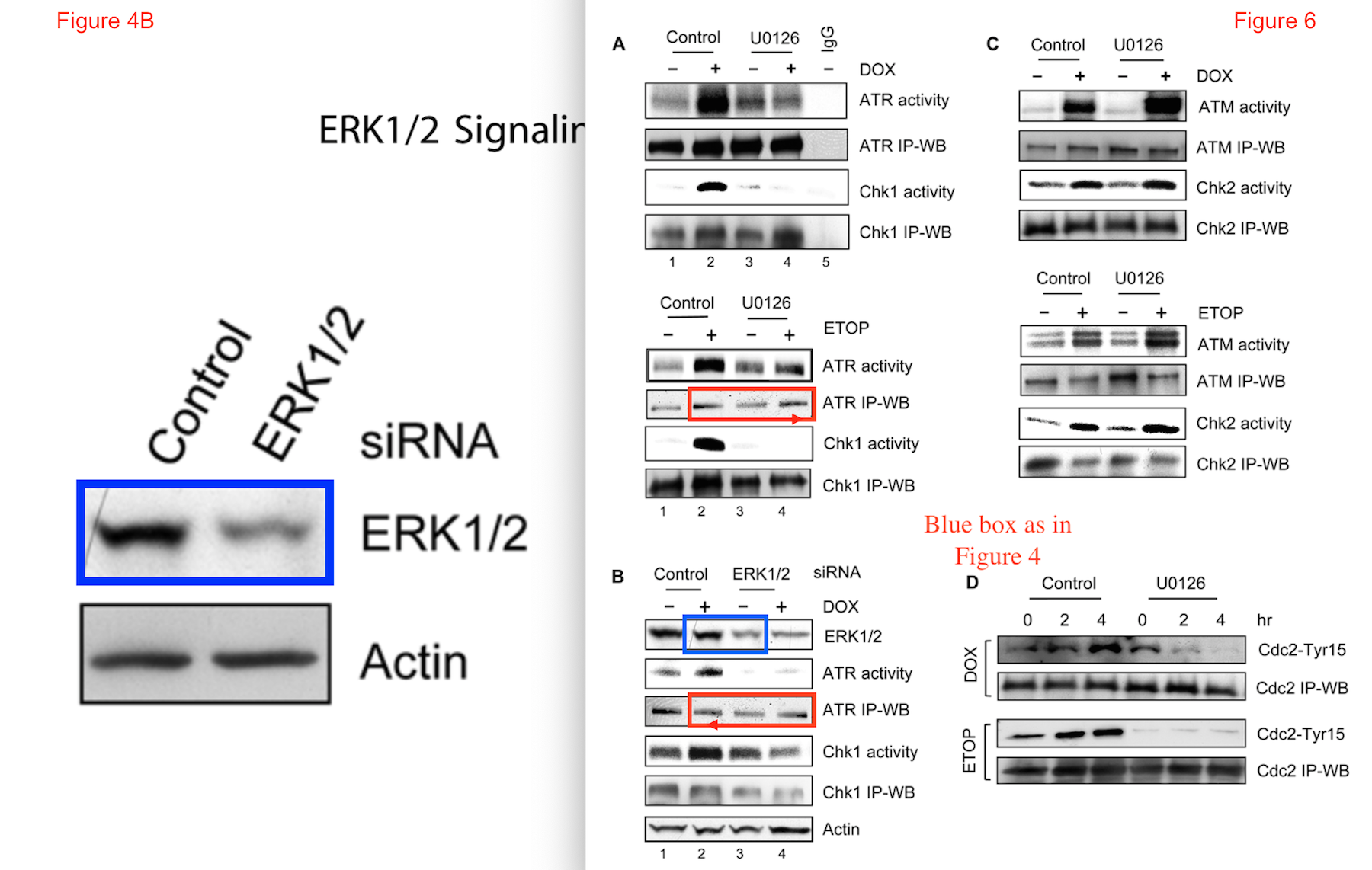
Now the authors would sure explain: but the reused blots show same signal, ATR and ERL1/2, respectively! Does it really matter that the samples described on these experiments are completely unrelated? Not in Nebraska, apparently.
The go-to journal for every cancer researcher dabbing in the art of the Photoshop is of course the pay-to-publish-your-fraud outlet known as Oncotarget, run by some confused-acting Soviet emigrees in New York. Yes, I am aware their lawyer Bukhlo might sent me another warning letter, but I am merely advertising for Oncotarget‘s business here! So here are again some happy customers, Yan and Cowan:
Y Yan, AL Hein, A Etekpo, KM Burchett, C Lin, CA Enke, SK Batra, KH Cowan, MM Ouellette Inhibition of RAC1 GTPase sensitizes pancreatic cancer cells to γ-irradiation Oncotarget (2014) doi: 10.18632/oncotarget.2500
Please appreciate, among all that creative gel reuse, that two ATR bands in Figure 5A are strangely identical. A mistake of oversight would have been to send this to JBC instead of Oncotarget. The last author and Nebraska associate professor Michel Ouellette can pat himself on the shoulder for being so far-sighted.
The year 2016 brought to the scientific community and to the publisher AACR this interesting artwork by the newly appointed Nebraska professor Yan. Not only western blots were photoshopped here, but also microscopy images of cell colonies and even photo sessions of arrayed rodents!
AL Hein, P Seshacharyulu, S Rachagani, YM Sheinin, MM Ouellette, MP Ponnusamy, MC Mumby, SK Batra, Y Yan PR55α Subunit of Protein Phosphatase 2A Supports the Tumorigenic and Metastatic Potential of Pancreatic Cancer Cells by Sustaining Hyperactive Oncogenic Signaling Cancer Research (2016) doi: 10.1158/0008-5472.can-15-2119
The most recent Yan contribution to creative cancer research, as analysed by Bik, is this:
T Tian, C Bi, AL Hein, X Zhang, C Wang, S Shen, J Yuan, TC Greiner, C Enke, J Vose, Y Yan, K Fu Rac1 is a novel therapeutic target in mantle cell lymphoma Blood Cancer Journal (2018) doi: 10.1038/s41408-018-0052-0
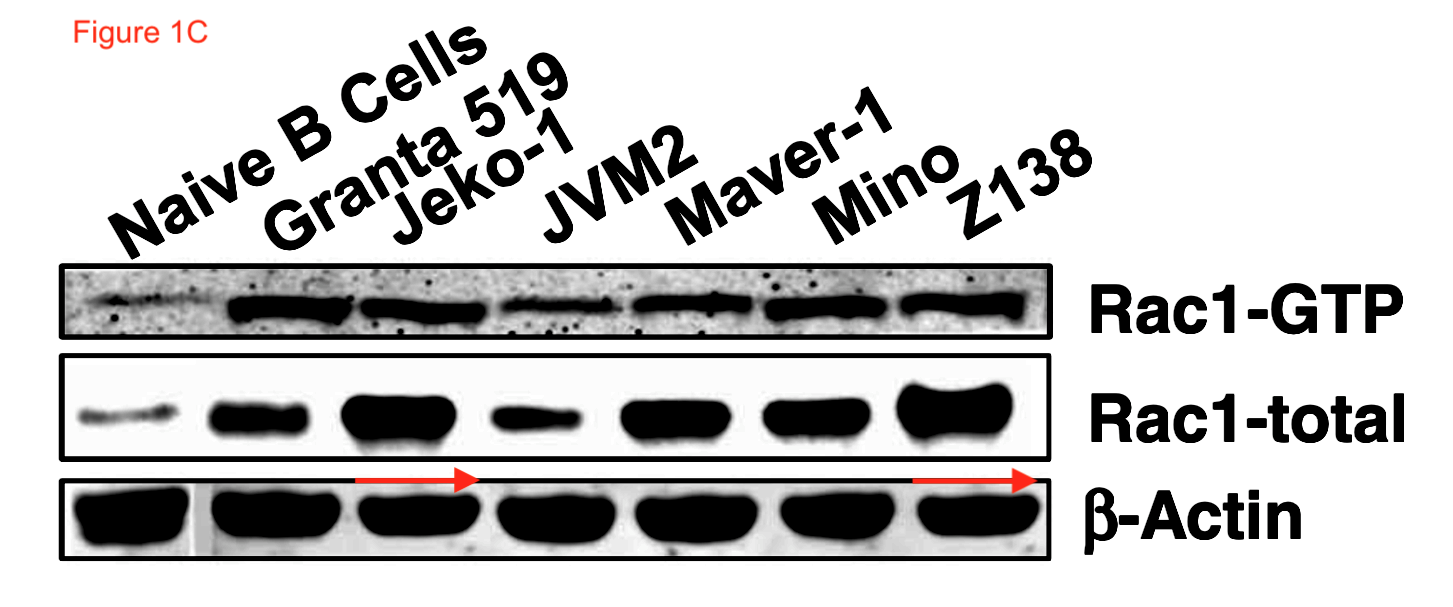
Now, it is popular in these days of Trumpian MAGA racist paranoia to blame foreign saboteurs, especially the Chinese. Yet the following paper lacks any foreign influence, it is as American as a counterfeit apple pie, featuring as its two authors Cowan and Scott Stoeger, now general surgeon at Oelwein Medical Center in Iowa:
SM Stoeger & KH Cowan Characterization of kinase suppressor of Ras-1 expression and anticancer drug sensitivity in human cancer cell lines Cancer Chemotherapy and Pharmacology (2009) doi: 10.1007/s00280-008-0794-7
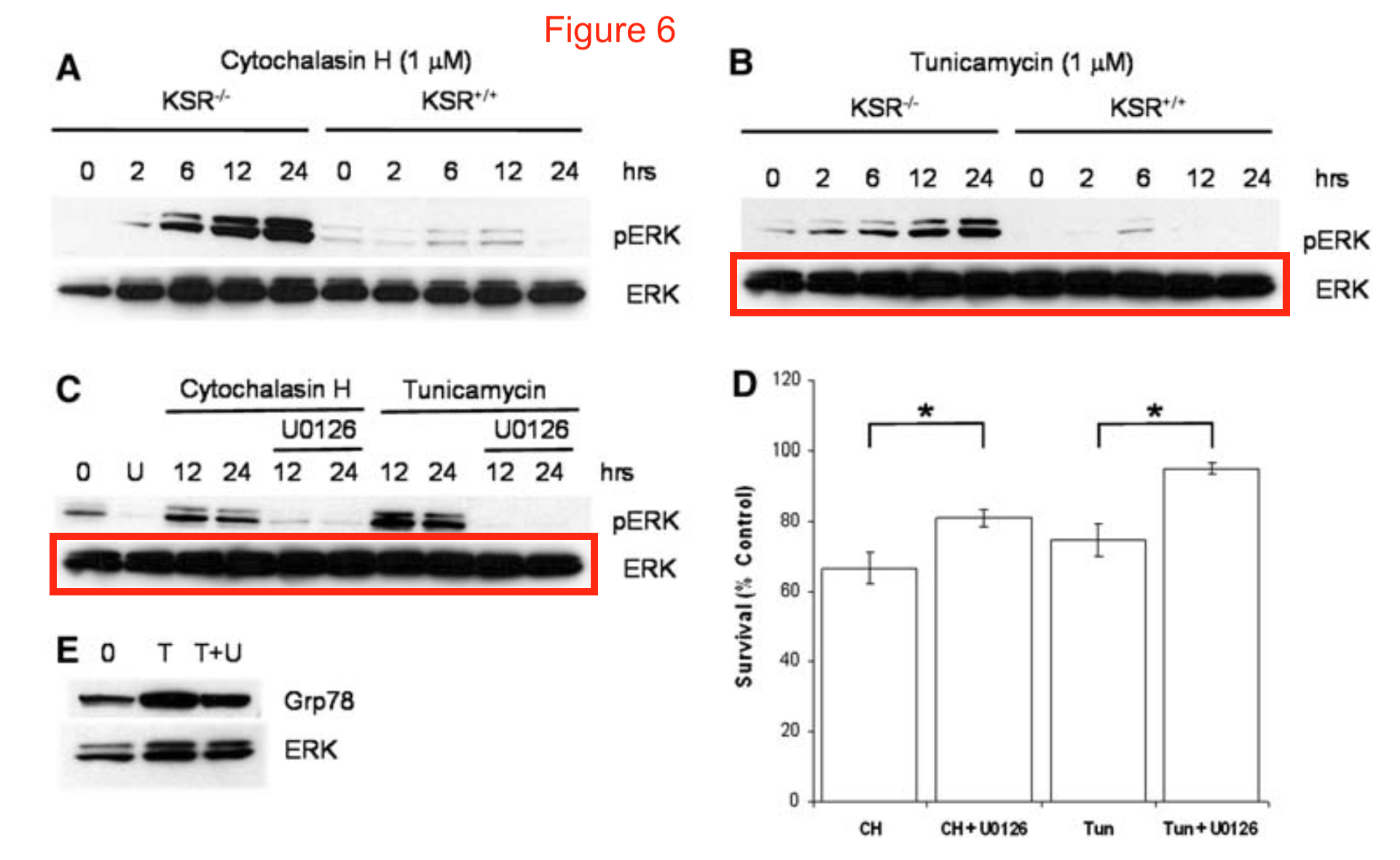
It’s the loading controls again, which apparently needed rigging after somebody mis-loaded the analytic gels in order to obtain the desired result.
In 2018, JBC corrected another Cowan and Stoeger coauthored paper from University of Nebraska, the figure was so plumply and obviously manipulated that the journal probably assumed pitiful stupidity while not wanting to punish the Cowan’s possibly clueless collaborators:
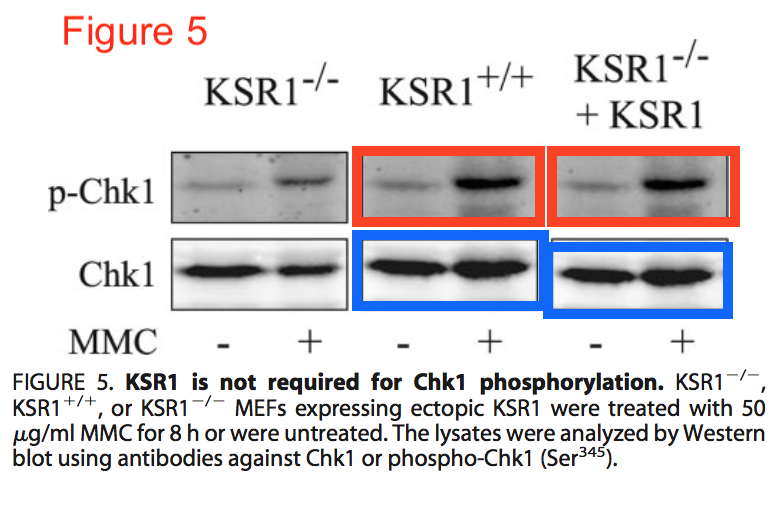
GL Razidlo, HJ. Johnson, SM Stoeger, KH Cowan, T Bessho, RE Lewis KSR1 is required for cell cycle reinitiation following DNA damage The Journal of biological chemistry (2009) doi: 10.1074/jbc.m806457200 ; Correction 7 December 2018.
Maybe not so clueless after all. Tadayoshi Bessho is associate professor at Eppley Institute, and he is listed on another Yan-coauthored paper, also corrected. The notice appeared just 4 months after Bik notified the journal, and at least we are not educated that the conclusions are not affected. Because they very much are.
ZY Pessetto, Y Yan, T Bessho, A Natarajan Inhibition of BRCT(BRCA1)-phosphoprotein interaction enhances the cytotoxic effect of olaparib in breast cancer cells: a proof of concept study for synthetic lethal therapeutic option Breast Cancer Research and Treatment (2012) doi: 10.1007/s10549-012-2079-4 ; Erratum 16 February 2016
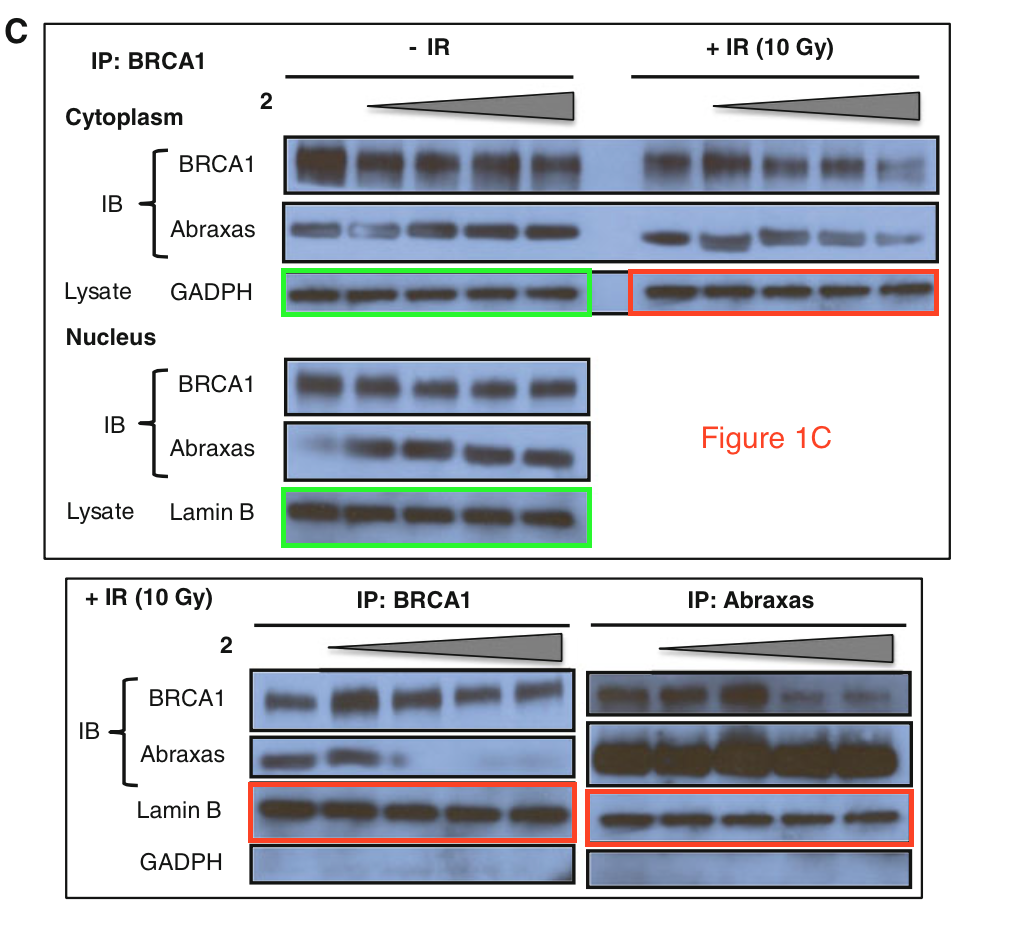
Would you like to know why the panel for nuclear marker Lamin came to be identical to that for the cytoplasm marker GAPDH? Because most likely, the experiments were never done as described, or at all. But the journal barely minded, even in the correction the authors were allowed to leave standing a pointlessly empty GAPD panel at the bottom of the figure. Who needs controls.
Now the question is: who cares about how University of Nebraska cures cancer in Photoshop, as long as the NIH money flows? Actually, maybe Bik’s emails to the University of Nebraska had some effect after all: Cowan resigned as director of the affiliated Fred & Pamela Buffett Cancer Center in October 2018, although he “will remain as a full-time faculty member and will continue to see patients.” The Center only opened in 2017.
The last sentence in the press release is a giveaway that Cowan’s resignation was probably rash and unplanned, since normally such resignations happen after a successor was recruited:
“Chancellor Gold indicated that a national search for the next director of the Fred & Pamela Buffett Cancer Center will be organized rapidly to ensure a smooth transition“.

Donate!
If you are interested to support my work, you can leave here a small tip of $5. Or several of small tips, just increase the amount as you like (2x=€10; 5x=€25). Your generous patronage of my journalism, however small it appears to you, will greatly help me with my legal costs.
€5.00
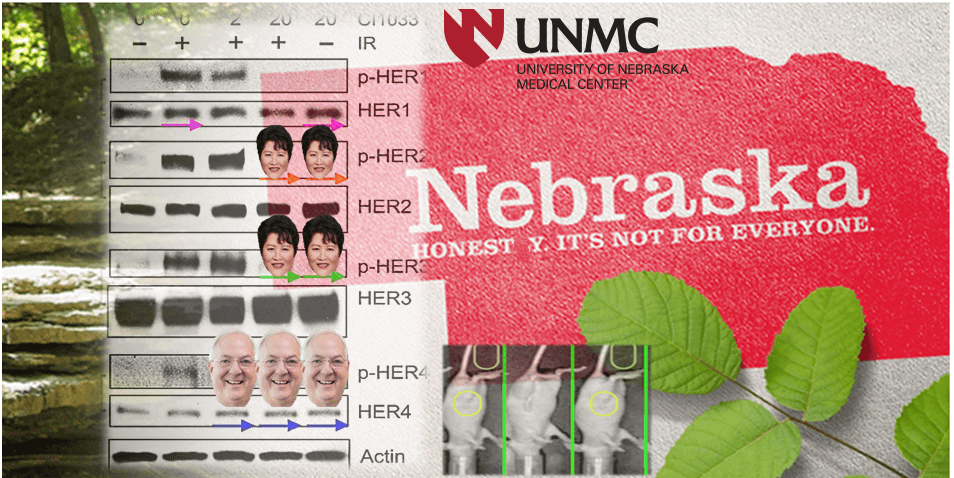









Given the extensive period of time over which the papers highlighted by the ever-vigilant Dr. Bik have appeared in print, I suppose we can assume that several of those NIH millions were obtained with applications based on fake data. Fixing a few dodgy papers in dodgy cancer journals is one thing, but where is the due diligence by funders here?
LikeLike
There is some due diligence from the NIH. Two PI’s at U of Kentucky (USA) were exposed because someone at the NIH saw a negative control in a grant application was actually a photo-shopped black box, and the NIH informed the ORI at the university. 1.5 years later, they were fired. In this case, like U of Nebraska, this was going on over a decade and tens of millions of grant money (and 1/2 million of salary per year to the PI’s) was wasted. Sadly, I think this going on at a lot of well funded labs in state schools, its just the PI’s got a little to sloppy putting together grant applications. Th rest are smart enough to be more careful.
LikeLike
I looked over Ying Yan’s website. There is none of the three funded NIH projects (R01, P30, and P50) having her as the PI. Any project having her as the PI or co-PI was listed under “Pending”, meaning she did submitted but waiting for NIH’s decision. However, with starting date of all these pending projects before 2019, most likely none of these pending projects received the positive decision of award. I did a search on RePORT and confirmed that Ying Yan has never been PI on any NIH funded projects.
LikeLike
Made a mistake in constructing the search query form by “unintentionally” swapping her first and last name. This should be the correct query terms and results. Well, you see? The “mistake-did-NOT-affect-conclusion” type of cases do occur!
LikeLike
With regards to the last figure, it was an honest mistake. When it was brought to our attention we addressed it in the erratum. We sent the original scan of the full film to the editors and I am happy to posit it here for your readers.
Please read comment #3 in the link below for the loading control issue that you bring up.
https://pubpeer.com/publications/18D2F42A95617CE7AA5E30A85DC984
I recognize what you do is important but please make sure you have all the facts before you post information.
LikeLike
I am not a social media user but I have got informed by someone that you have posted a malicious posting about me on your twitter blog, to which I feel the need to respond by making the following statements:
When my institution received Elisabeth Bik’s report in 2016, it did launch a formal investigation on the five publications on which I was an author. The investigation committee consisted of several scientists with various expertise, a lawyer, 2 computer specialists, and a recorder. I have fully collaborated with the investigation and provided them with all the raw data associated with the 5 papers. The investigation lasted close to a year and concluded in December of 2016 that no scientific misconduct had been committed, just honest human errors in the production of some of the figures, mostly attributed to a lack of organization in how files had been named and classified. As per my institution’s confidentiality policy, the investigation was kept private and given the conclusion that there was no malicious misconduct committed, no public announcements were therefore made by the University.
I have sent my corrections for the 5 papers to their respective journals in 2017. Among the papers, the 2002 JBC paper contained the most errors due to my lack of experience in data management and in supervising students’ work. I, therefore, initiated the withdrawal of this 2002 JBC paper in the hope of clearing up the errors and for eventual re-submission of an error-free paper, given that the raw data are still very much in support of the conclusions of the study. As for the 2011 PlosOne article, we have found all the raw data that should have been used in the figures and have submitted the corrected figures to PlosOne in 2017, and have been communicated with PlosOne ever since. We are currently at the final step of submitting our final corrections to the journal. As for the other three papers, I also have sent corrections to the different journals, but none have so far published them, which is not under my control.
I have never received any NIH funding for research. Your testament in your blog that “She is presently supervising 7 NIH R01 grants worth over $15mn as a principal investigator” is false information and probably only wishful thinking on your part to boost the impact of your blog. Thanks very much to @TigerBB8 for clearing this up.
I resent that your posting is insinuating that I have manipulated the figures for the express purpose of making the results look better. There were truly no malicious intents on my part, just a lack of experience and organization. Matter of fact, in all cases, the raw data that should have been used are still supporting the main conclusions of each of the papers. Your malicious post is likely to cost me my job, as my institution will probably feel the need to protect its reputation from your disparagements. In which case, I reserve myself the right to pursue legal actions to sue your web site in a court of law for defamation and slander.
LikeLike
Dear Dr Yan, thank you for commenting here. Please notice that I never accused anyone of research misconduct, but merely interpret the evidence in public domain (ie, on PubPeer). In my view, those are not honest errors, and all coauthors bear by definition a degree of responsibility. Now, you say you were responsible for the discussed figures. If your university decides to seek separation from you, this will be only because they disapprove of your approach to science, and not because of my this post.
Also, some papers presented lack your authorship, can you tell us who was responsible there?
I am sorry about your non-existent NIH grants. Why did you list them on your institutional website?
LikeLike
Good to see Dr. Yan here. I’d take the chance to ask what happened to the other couple of papers of yours flagged on Pubpeer. If you can kindly let Leonid’s readers know?
LikeLike
Because of the institution’s confidentiality policy, any investigations are kept private. I, therefore, don’t know the answer to your question. To your second question, those are unfunded pending grants and the IT department has forgotten to update the website.
LikeLike
Dr Yan,
I saved the page here for the record:
https://web.archive.org/web/20191130203635/https://www.unmc.edu/radonc/faculty/yan.html
Maybe you can comment on this: You and and Michele Ouellette are registered at the same home address and phone number. You both arrived to Omaha together, after having worked in the same lab before. Maybe your friend can weigh in on that Oncotarget paper which contains obviously falsified data? Was that honest errors as well? If not, why is your friend Michele (last author) not taking the responsibility?
https://pubpeer.com/publications/7BE449A2A80C1551DEB6A4B03CC54A#
LikeLike
The paper had been investigated and honest errors were found in this paper as well. We also have submitted the corrections to the journal.
LikeLike
Dr Yan, thanks.
I understand the UoN report is confidential, but surely you can share with us their definition of an “honest error”?
LikeLike
Given the many errors in your papers spanning several years, you cannot expect neutral observers to give blanket acceptance to the “honest error” explanation. It is downright malicious to expect that level of stupidity. Your host institution has a vested interest in keeping you in business and away from the glare of publicity, but many readers here would have a legitimate interest in shutting down an enterprise that seems to be a massive waste of taxpayer dollars run by proven incompetents. That’s no secret, nor will be any revelations concerning grant monies won by applications featuring dodgy work from you and your colleagues.
LikeLiked by 1 person
Integrity lies at the heart of UNMC’s research, with ethical standards and best practices guiding scientific work aimed at achieving medical breakthroughs for patients. Any report of concerns about the conduct of a study is diligently pursued by the UNMC Office of Research Integrity with the dual purpose of upholding standards of research excellence and abiding by policies and regulations set by government funding agencies. These practices support our faculty members and the integrity of all research conducted at UNMC.
LikeLike
Dear UNMC, are you saying you are going to initiate (or has initiated) a formal investigation for issues raised in this article (as well as on Pubpeer)?
LikeLike